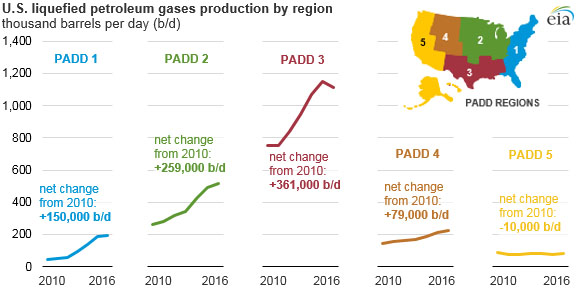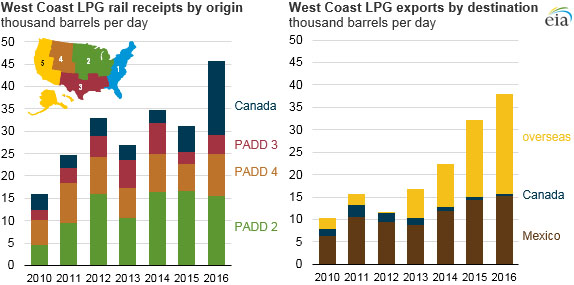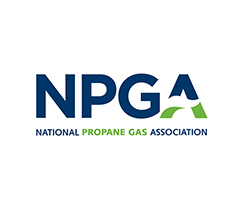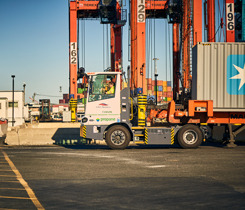EIA offers look into dynamics of West Coast propane supply
Total U.S. production of liquefied petroleum gases – propane and butanes – increased to 2.1 million barrels per day (bpd) in 2016.
But according to the U.S. Energy Information Administration (EIA), production of LP gas increased in all regions of the United States last year except on the West Coast, or in Petroleum Administration for Defense District (PADD) 5.
Unlike other regions, West Coast LP gas production has been on the decline since 2010. Refinery production in the PADD is down, as production totaled 80,000 bpd in 2016. That’s 10,000 bpd less than in 2010.
An increase in production at natural gas processing plants has driven much of the nation’s increase in LP gas production, which has nearly doubled since 2010. Production was close to 1.8 million bpd in 2016. In PADD 5, though, natural gas processing plant production was flat at about 34,000 bpd last year.
According to EIA, relatively low levels of in-region production and a lack of LP gas pipeline infrastructure have isolated the West Coast from the LP gas-related industrial growth that has occurred elsewhere in the U.S., especially along the Gulf Coast (PADD 3). As a result, PADD 5 increasingly relies on rail transport for its LP gas supply.
Although LP gas exports are up since 2010 and despite the West Coast being just 14 days away by tanker from major East Asian ports, only 6 percent of exports to those destinations derives from the West Coast, according to EIA. The Gulf Coast, which is 28 days away from East Asia, accounts for the rest of U.S. exports.
Asia is the top destination for U.S. LP gas exports, accounting for 44 percent of all volumes, EIA adds.
Still, despite its relatively small share of growing U.S. exports, LP gas export growth measured in absolute volumes from the West Coast to East Asian markets has drawn increasing supplies of Asia-bound LP gas by rail into the region, especially from Canada. New data shows that the West Coast received 46,000 bpd of LP gas by rail from Canada and other PADDs in 2016. That’s up from 16,000 bpd in 2010.
At the same time, exports of LP gas from the West Coast rose by nearly 5,000 bpd in 2016 to more than 37,000 bpd. Product ultimately exported to Asia accounted for most of the growth.
According to EIA, an increased ability to transport LP gas by rail has allowed western Canadian producers, who can no longer ship LP gas by pipeline to the Midwest, to ship more LP gas to the West Coast, where it can be exported to overseas markets.


















